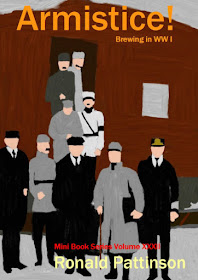I came across a Dominic of Horsham advert from 1948 which lists various, mostly quite well know, beers.1948 is a good year for me because Whitbread were very active at that time collecting samples of other brewers' beers for analysis. Meaning I have analyses of many of the beers in the price list.
It's always fun to play around with tables of data. Especially when I can combine information from different sources. As I know the OG and the price, I can easily work out the price relative to strength, by calculating the cost per gravity point.
I was slightly surpised by how consistent the pricing is: around 0.28d per gravity point. Then again, so much of the price of beer was the tax, that it flattens out any variation. Truly unexpected is discovering that Bass and Worthington Pale Ales were the best value. They're exactly the type of beer that you might expect to charge a premium price. Guinness - another beer with a premium image - comes out around average.
No prizes for guessing the worst value beers. Obviously that honour goes to the Lagers. They've always been crap value in the UK.
That the Burton Pale Ales are listed as Burton Ales is rather annoying. They aren't and never were.
| PALE ALES | half Pts. | Pts | Qts. | OG | price per gravity point |
| SIMONDS' Light Ale | 7.5d | 1/2d | 2/3d | ||
| " S.B. Best Pale Ale | 8d | 1/3d | 2/5d | 1029.1 | 0.2749 |
| Rigden's "KENT'S BEST" Pale Ale | 8.5d | 1/4d | 2/7d | ||
| BROWN ALE | |||||
| SIMONDS' Brown Ale | 7.5d | 1/2d | 2/3d | 1025.6 | 0.293 |
| SIMONDS' "Berry Brown" Ale | 8.5d | 1/4d | 1029.5 | 0.2881 | |
| Rigden's "KENT'S BEST" Brown Ale | 8.5d | 1/4d | 2/7d | ||
| STOUT | |||||
| SIMONDS' Luncheon Stout | 8d | 1/3d | 2/5d | ||
| SIMONDS' SPECIAL Stout | 1/- | 1043.9 | 0.2733 | ||
| Rigden's DOUBLE STOUT | 8.5d | 1/4d | 2/7d | ||
| HAMMERTON'S OATMEAL | 11d | 1/8d | 3/2d | 1036.8 | 0.2989 |
| GUINNESS | 1/1d | 2/- | 3/10d | 1045.2 | 0.2876 |
| BURTON ALE | |||||
| SIMONDS' I.P.A. | 1/- | 1039.7 | 0.3023 | ||
| Bass | 1/2d | 2/3d | 1053.8 | 0.2602 | |
| Worthington | 1/2d | 2/3d | 1054.1 | 0.2588 | |
| BEN TRUMAN | 1/2d | 1048.2 | 0.2905 | ||
| LAGER | |||||
| RED TOWER | 1/1d | 1035.8 | 0.3631 | ||
| Barclay's | 1/1d | 1036.1 | 0.3601 | ||
| CARLSBERG (Imported) | 1/5d | 1035.6 | 0.4213 | ||
| PILSNER URQUELL (Imported) | 1/7d | 1049 | 0.3469 | ||
| Sources: | |||||
| West Sussex County Times - Friday 26 November 1948, page 11. | |||||
| Whitbread Gravity book held at the London Metropolitan Archives, document number LMA/4453/D/02/002. | |||||








